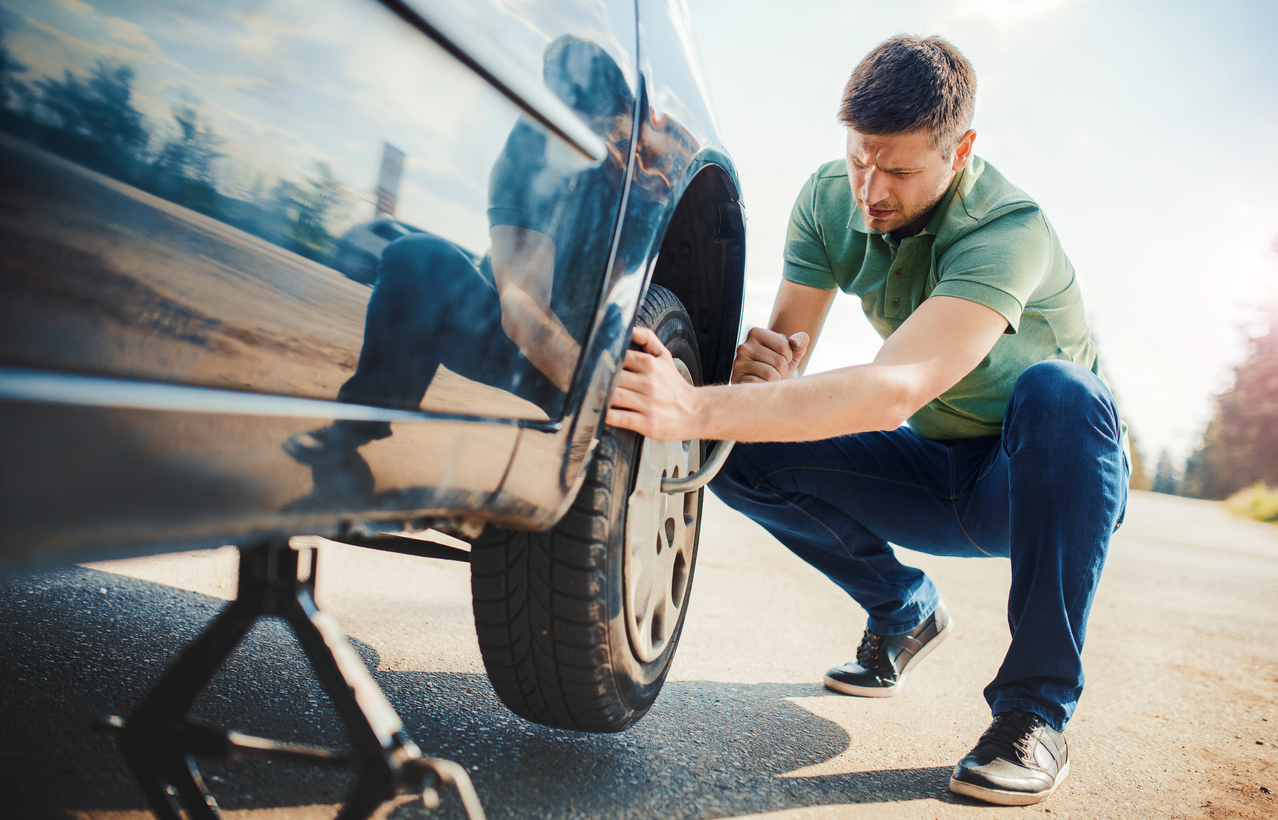| By Gene Hannon Jr. |
Basic vehicle awareness consists of simple things we can do that might help us avoid a bad situation, like a flat tire. We count on our vehicles to get us where we want to go safely. Most vehicles are reliable, but extreme weather and busy schedules can mean trouble for your vehicle. Here are three quick checks you can make to help protect you, your passengers, and others on the road.
1. Tires
When you head out to your vehicle, look at the tires. Make sure they all look about the same. Do any tires look low? Carefully look at the tires and the tread. It’s easy to forget how important tires are. A low tire will overheat, and then it usually blows out. Who wants to be stranded on the side of the road with a flat tire? Just by looking at the tires beforehand, you may see a problem.
After you visually check all four tires on your vehicle, use a tire pressure gauge to check that the tires have the correct amount of air in them.
On most vehicles, a placard affixed to the driver’s door jamb shows the correct tire pressure. There’s also a tire pressure imprinted on the tire itself. What’s on the tire sidewall is the maximum the tire is safely rated for when it’s cold. Don’t use the pressure that’s marked on the tire itself unless it is the same as the pressure on the door jamb. The door jamb tire pressure placard indicates the right pressure for your year, make, and model with the components (such as four-wheel drive) originally installed by the auto manufacturer.
I know what you’re thinking, “What about my TPMS (Tire Pressure Monitoring System)? It’s supposed to notify me when the tire is low.” While the TPMS will detect tire underinflation below a certain threshold, the tires may be prematurely wearing in the meantime, so check them anyway. I’m curious to know what my tires look like, especially when I’m going on a long trip. Also, I have experienced problems with some of the TPMS systems. As one example, the service information bulletin excerpt below explains that for the Subaru models listed, moisture may damage the TPMS sensor. To remedy this, Subaru changed the design.
2. Wipers and Washer Fluid
When you stop for gas or a charge, walk around the vehicle and see how things look. Turn the lights on—are any bulbs out? How are the wiper blades? Is the washer solution low? Check the wiper blades and refill the washer solution.
3. Lights
Turn on your lights to see if any are out. Check the turn-signal blinkers too. If a helper is available, have them step on the brake pedal so you can check the brake light operation.
If you get in the habit of looking at some of the basic safety components on your vehicle, it will pay off down the road. When it comes to basic care awareness, don’t be afraid to go for it. The fact is, we tend to forget how important it is to keep our vehicle in good running condition. We have precious cargo to think about, as we’re driving our friends and family around—not to mention other motorists.
If your library has ChiltonLibrary, share this post with your patrons and turn them on to your Chilton resource. If you want to know more about ChiltonLibrary, trial it today!

About the Author
Gene Hannon Jr., an ASE Master Technician, began working with cars when he was 13 at his father’s ESSO service center, where he cleaned equipment and tools, scrubbed out the repair bays, and pumped gas. By age 16, he was turning wrenches and receiving technical training. He worked at the station for 29 years before partnering with his father and brother in opening an eight-bay automotive repair center, where he worked for more than 10 years. After that, Gene shared his wealth of knowledge with Chilton for 14 years.





